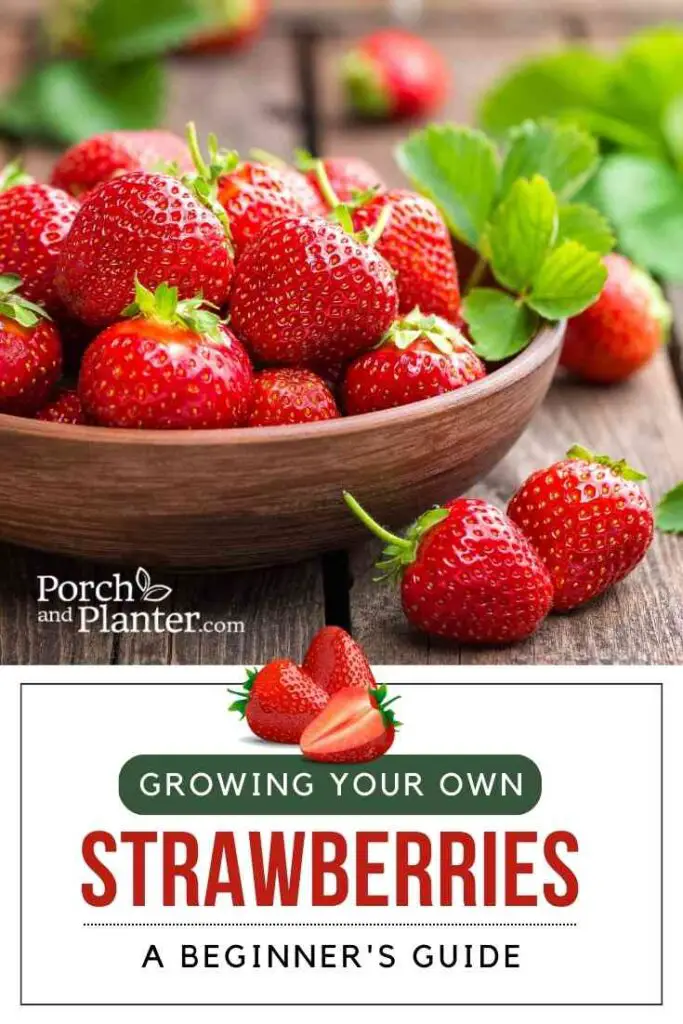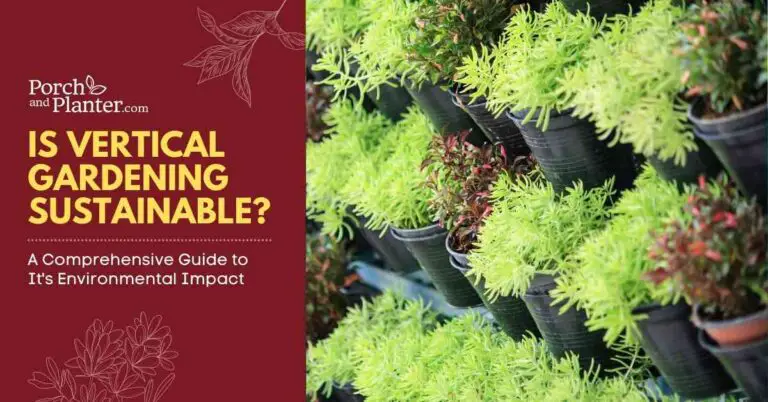Growing Your Own Strawberries: A Beginner’s Guide

Who doesn’t love the sweet, juicy taste of fresh strawberries? Did you know that you can grow your own strawberries right in your own backyard? Not only are they delicious, but strawberries are also packed with health benefits, making them a great addition to any diet. While it may seem intimidating to grow your own strawberries, it’s actually quite simple and can be a fun and rewarding experience for beginners and experienced gardeners alike.
In this beginner’s guide, we’ll walk you through everything you need to know to get started growing your own strawberries, from selecting the right variety to caring for your plants. So grab your gardening gloves and let’s get started!
Choosing the Right Variety of Strawberries
When it comes to growing strawberries, choosing the right variety is crucial for success. There are three main types of strawberries: June-bearing, everbearing, and day-neutral. Each type has its own unique characteristics and requirements. It’s important to do your research and choose a variety that is well-suited to your climate and growing conditions.
June-Bearing Strawberries
June-bearing strawberries are the most common type of strawberry. They produce a large crop of berries over a two to three week period in late spring to early summer. June-bearing strawberries require a cold winter period to produce fruit, making them best suited for cooler climates. They also require a lot of space, as they produce runners that can quickly take over a garden bed.
Some popular varieties of June-bearing strawberries include:
- Chandler
- Jewel
- Seascape
- Allstar
Everbearing Strawberries
Everbearing strawberries produce two to three harvests of fruit throughout the growing season. They produce a smaller crop of berries than June-bearing strawberries, but they do not require a cold winter period to produce fruit. Everbearing strawberries are best suited for mild climates and can be grown in containers or small garden beds.
Some popular varieties of everbearing strawberries include:
- Ozark Beauty
- Quinault
- Tribute
- Fort Laramie
Day-Neutral Strawberries
Day-neutral strawberries are a newer type of strawberry that produce fruit throughout the growing season. They do not require a cold winter period to produce fruit and are best suited for mild climates. Day-neutral strawberries are also well-suited for container gardening and small garden beds.
Some popular varieties of day-neutral strawberries include:
- Albion
- Seascape
- Tribute
- Evie 2
Preparing the Soil for Growing Strawberries
Preparing the soil is a crucial step in growing healthy and productive strawberry plants. Strawberries prefer well-draining soil that is rich in organic matter, such as compost or aged manure. They also require regular fertilization to ensure healthy growth and fruit production. Here are some tips to help ensure your soil is ready for planting:
Test the Soil pH
Strawberries prefer slightly acidic soil, with a pH between 5.5 and 6.5. Testing the soil pH is essential to ensure that the soil is within the ideal range. You can use a soil test kit or send a sample to a local agricultural extension office for testing.
Amend the Soil
If the soil pH is too low or too high, it can be amended by adding lime or sulfur, respectively. Additionally, adding organic matter such as compost, aged manure, or shredded leaves can help improve soil structure, drainage, and fertility. It is recommended to add 2-3 inches of organic matter to the topsoil and mix it in well.
Choose the Right Soil Type
Strawberries grow best in well-draining soil that is rich in nutrients. Sandy loam soils are ideal for strawberries, as they provide good drainage and aeration while retaining moisture and nutrients. If you have heavy clay soil, adding organic matter and sand can help improve drainage and prevent waterlogging.
Mulch the Soil
Mulching the soil around strawberry plants can help conserve moisture, suppress weeds, and regulate soil temperature. Organic mulches such as straw, leaves, or grass clippings are ideal for strawberries, as they break down slowly and add nutrients to the soil over time. Apply a 2-3 inch layer of mulch around the plants, taking care not to cover the crowns.
Fertilize the Soil
Strawberries are heavy feeders and require regular fertilization to maintain healthy growth and fruit production. A balanced fertilizer with an NPK ratio of 10-10-10 or 16-16-16 can be applied at a rate of 1-2 pounds per 100 square feet of soil. It is recommended to apply fertilizer in early spring and again after the first harvest.
Planting Strawberries
When it comes to planting strawberries, there are two main methods: planting in the ground and planting in containers. Both methods have their advantages and disadvantages, and the choice ultimately depends on the grower’s preferences and available space.
Planting in the Ground
Planting strawberries in the ground requires a bit of preparation, but it can be a great option for those who have ample garden space. Here are some tips for planting strawberries in the ground:
- Choose a sunny spot: Strawberries need at least 6-8 hours of direct sunlight per day to grow and produce fruit. Choose a spot in your garden that receives plenty of sunlight throughout the day.
- Prepare the soil: Strawberries prefer slightly acidic soil with a pH between 5.5 and 6.5. Test your soil’s pH and amend it with lime or sulfur if necessary. Work in plenty of compost or well-rotted manure to improve soil fertility and drainage.
- Plant at the right time: In most regions, the best time to plant strawberries is in early spring or late fall. Planting in the fall allows the plants to establish roots before the winter, while planting in the spring gives them a whole growing season to mature.
- Space the plants correctly: Strawberry plants should be spaced about 12-18 inches apart in rows that are 2-3 feet apart. This allows the plants to spread out and prevents overcrowding.
- Mulch the plants: Strawberries benefit from a layer of mulch to help retain moisture, suppress weeds, and protect the fruit from rotting on the ground. Use straw, pine needles, or shredded leaves as mulch.
Planting in Containers
Planting strawberries in containers is a great option for those with limited garden space or who want to grow strawberries on a patio or balcony. Here are some tips for planting strawberries in containers:
- Choose the right container: Strawberry plants need plenty of room to grow, so choose a container that is at least 12 inches wide and 8 inches deep. Terra cotta, plastic, or wooden containers work well.
- Use the right soil: Use a high-quality potting mix that is well-draining and nutrient-rich. Avoid using garden soil, which can be too heavy and compact for container growing.
- Plant at the right time: Plant strawberries in containers in early spring or late fall, just like you would in the ground.
- Space the plants correctly: Plant one strawberry plant per container, or two plants if the container is large enough. Make sure the plants are spaced at least 12 inches apart to allow for proper growth and air circulation.
- Water regularly: Container-grown strawberries need to be watered more frequently than those grown in the ground. Water deeply once or twice a week, depending on the weather and the size of the container.
- Fertilize regularly: Container-grown strawberries need regular feeding to thrive. Use a balanced fertilizer every 2-3 weeks during the growing season.
Caring for Your Strawberry Plants
Growing strawberries can be a rewarding experience, but it requires proper care and attention. Here are some tips on how to care for your strawberry plants to ensure a bountiful harvest.
Watering
Strawberry plants require consistent moisture, but they do not like to be waterlogged. It is important to water them deeply once or twice a week, depending on the weather and soil conditions. Avoid overhead watering, as it can cause fungal diseases. Instead, use drip irrigation or a soaker hose to water at the base of the plants.
Fertilizing
Strawberry plants are heavy feeders and require regular fertilization. Use a balanced fertilizer with equal amounts of nitrogen, phosphorus, and potassium. Apply fertilizer in early spring and again after the first harvest. Be careful not to over-fertilize, as it can lead to excessive foliage growth and poor fruit production.
Mulching
Mulching is important for strawberry plants as it helps to conserve moisture, suppress weeds, and regulate soil temperature. Use a thick layer of straw, shredded leaves, or pine needles to mulch around the plants. Avoid using grass clippings or fresh manure, as they can attract pests and burn the plants.
Pruning
Pruning is essential for maintaining healthy and productive strawberry plants. Remove any dead, damaged, or diseased leaves and runners as soon as you notice them. Cut back the foliage to about one inch above the crown after the last harvest of the season. This will help to promote new growth and prevent the build-up of pests and diseases.
Pest and Disease Control
Strawberry plants are susceptible to a variety of pests and diseases, including aphids, spider mites, powdery mildew, and gray mold. To prevent infestations, inspect your plants regularly and remove any affected leaves or fruit. Use insecticidal soap or neem oil to control pests, and fungicides to control diseases. Avoid using chemical pesticides, as they can harm beneficial insects and pollinators.
Harvesting Your Strawberries
Once your strawberries have ripened, it’s time to harvest them. Here are some tips to ensure you get the most out of your harvest:
Know When to Harvest
Strawberries are at their sweetest when fully ripened on the plants. For most varieties, this means leaving the berries on the plant for a day or two after they are fully colored. The only way to know for sure is a taste test. Most varieties will be ready to start picking within four to six weeks after they bloom, so keep an eye on them during this time.
Pick the Right Time of Day
Morning, when the berries are still cool, is the best time for picking strawberry fruit. Strawberries are delicate fruit and bruise easily, so care must be taken when harvesting. Bruised fruit will degrade faster, while unblemished berries last longer.
How to Pick Strawberries
When picking strawberries, it’s important to use a gentle touch. Hold the stem just above the berry and twist it gently to remove the fruit. If the stem does not come off easily, use scissors or a knife to cut it off. Be sure to leave about one-quarter of the stem attached to the berry.
Tips for a Bountiful Harvest
To ensure a bountiful harvest, be sure to remove any overripe or damaged berries from the plant as soon as possible. This will prevent them from attracting pests or diseases that can spread to healthy plants. Additionally, be sure to water your plants regularly and fertilize them as needed to keep them healthy and productive.
Storing and Using Your Strawberries
Growing strawberries is only half the battle. Strawberries are delicate and should be handled with care. Once picked, they should be eaten or refrigerated as soon as possible. You’ll need to know how to store and use them properly. Here are some tips to help you get the most out of your strawberry crop.
Storing Fresh Strawberries
When it comes to storing fresh strawberries, it’s important to keep them dry and cool. Moisture and warmth can cause them to spoil quickly. Here are some ways to store fresh strawberries:
- Keep them in the fridge: Store your strawberries in the fridge in a shallow container lined with paper towels. This will help absorb any excess moisture and keep your berries fresh for up to a week.
- Keep the stems on: Leaving the stems on your strawberries can help them last longer. The stems help keep the berries fresh by preventing moisture and bacteria from getting inside.
- Don’t wash them until you’re ready to use them: Washing your strawberries too far in advance can cause them to spoil faster. Wait until you’re ready to use them to wash them.
Freezing Strawberries
If you have more strawberries than you can use, freezing them is a great way to preserve them for later use. Here’s how to freeze strawberries:
- Rinse and dry your strawberries: Rinse your strawberries under cold water and pat them dry with a paper towel.
- Remove the stems: Use a paring knife or a strawberry huller to remove the stems from your berries.
- Freeze the berries: Place the strawberries on a baking sheet lined with parchment paper and freeze them for a few hours until they’re solid. Once they’re frozen, transfer them to a freezer-safe container or bag.
Conclusion
Growing your own strawberries can be a fun and rewarding experience for beginners and seasoned gardeners alike. With a little bit of planning and preparation, you can enjoy a bountiful harvest of fresh, juicy strawberries right from your own backyard. Remember to choose the right variety for your climate, plant in well-draining soil, and give your plants plenty of water and sunlight. With a little bit of patience and care, you’ll be enjoying delicious strawberries in no time! So go ahead, give it a try, and see for yourself just how sweet the rewards of growing your own strawberries can be. Happy gardening!


![Are Pavers Safe for a Fire Pit? [ANSWERED]](https://porchandplanter.com/wp-content/uploads/2021/09/Are-Pavers-Safe-for-a-Fire-Pit-768x402.jpg)




